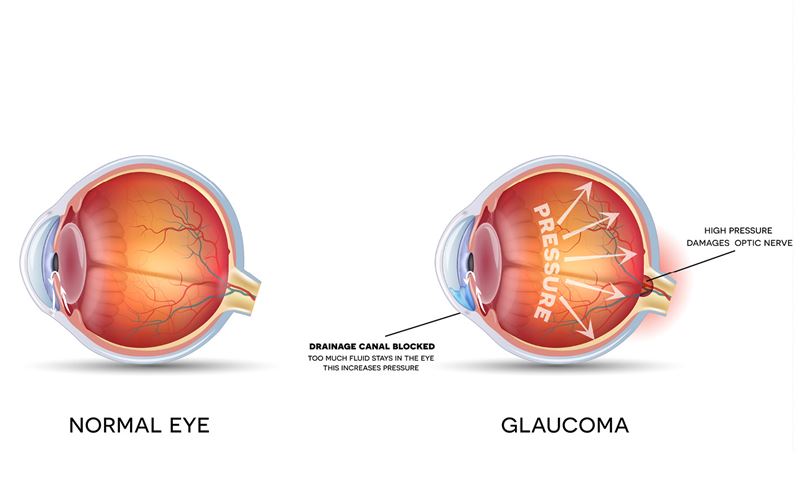Published 03 Mar 2021
While rock stars may be worshipped like Gods, they are still vulnerable to illness like the rest of us. The shock of INXS band member Kirk Pengilly nearly losing his vision as a young man is a cautionary tale for all of us – rock star or not.
In 1987, Australian rock band INXS was at the height of their career. The band had just released their most successful studio album “Kick” and they were riding the wave of worldwide success. For the then 29 year old saxophonist and guitarist Kirk Pengilly, the last thing on his mind was his health.
But whilst on tour with INXS he experienced what felt like daggers being pressed into his eyes, he knew quickly that something was wrong. Soon after he was diagnosed with glaucoma.
“When I got glaucoma it really hit home how lucky I was to not lose my sight,” says Kirk.
It was only thanks to pioneering laser surgery at the time, that his sight was saved from what was a rare condition called Acute Angle Closure Glaucoma.
“Until that point, I had no idea what glaucoma was” he shares.
Just like Kirk, 300,000 Australians are affected by glaucoma. But what is glaucoma, who is at risk and what can be done to prevent it?
GMHBA optometrist, and resident rock star, Alannah Greig, answers all your questions about glaucoma.
What is glaucoma?
Glaucoma is one of the most common eye diseases. It occurs when the optic nerve, that sends the visual information from the eye to the brain, is damaged, causing vision loss.
Peripheral (side) vision is typically first to be affected. As glaucoma progresses, a patient progressively loses more side vision until only a ‘tunnel’ of central vision remains.
There are many different types of glaucoma some more common than others. Most patients have Open Angle Glaucoma, which is slow to progress. Kirk was diagnosed with the rarer Acute Angle Closure Glaucoma which can cause more sudden vision loss. There are many other sub-types of glaucoma.
Am I at risk of developing glaucoma?
The most common way the optic nerve can be damaged is by having high eye pressures (pressure of the clear fluid that fills the eye). However, there are other risk factors which may include:
- A family history of glaucoma
- Aged over 60
- Short-sightedness
- High eye pressures
- Diabetes
- Smoking
How do I know if I have glaucoma?
Glaucoma is largely asymptomatic. That means there are no symptoms. Most patients do not realise they have lost some of their side vision until advanced stages of the disease.
This highlights how important it is to have regular eye tests including an optical coherence tomography (OCT) test.
What is an OCT test?
An OCT scan is a non-invasive scan of the structures at the back of the eye, namely the retina and the optic nerves. It is like an ultrasound except that it uses light waves instead of sound waves to generate an image.
An OCT scan gives us greater detail about the health of the optic nerve. It can indicate early changes to the optic nerve before any side vision is lost and is an excellent diagnostic tool for detecting glaucoma.
Can glaucoma be treated?
Glaucoma cannot be cured but reassuringly, glaucoma can be effectively managed with treatment. Most patients take eye-drops once or twice a day to lower their eye pressure. In more severe cases, or when a patient cannot take eye-drops, there are laser and surgical treatment options.
I have been asked to do a visual fields test, what is it and why is it important?
A visual field test is a functional measure of your side vision. As side vision can be lost in glaucoma, it is important to test your side vision to monitor if your glaucoma is progressing. The extent of loss of side vision also gives us an idea about how your glaucoma is impacting your daily activities, like walking and driving.
Will I go blind?
You can go blind from glaucoma. However, patients who see their optometrist or ophthalmologist for their regular eye tests and are compliant with taking their glaucoma medication usually retain most of their vision.
Can I still drive if I have glaucoma?
Most glaucoma patients can still drive. In advanced stages of the disease, when a certain amount of side vision is lost, a patient may no longer meet the legal driving standards. In this case they may be granted a licence with conditions or lose their licence.
What are the next steps I should take to keep my eyes healthy?
Booking in for regular eye tests is a habit even rock stars subscribe to, "Just as you go to the dentist or doctor for a check-up, you need to put an eye exam on your “things-to-do list”, particularly those over 50 like me,” says Kirk.
You can book your appointment online with a GMHBA optometrist or read more about glaucoma at Glaucoma Australia or Vision Australia.



